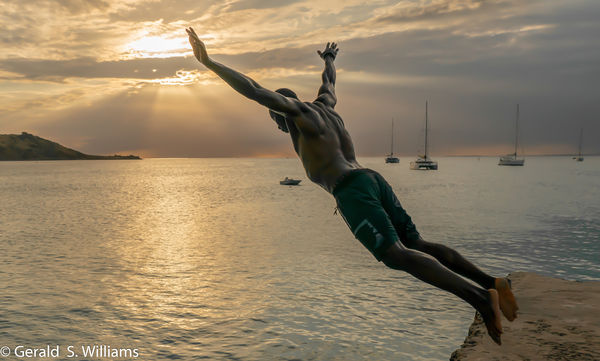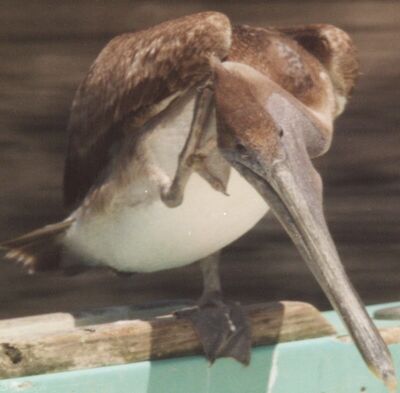How does NATIONAL GEOGRAPHIC do it?
Apr 26, 2019 17:47:55 #
johnblenko wrote:
I have also heard, can’t verify, that they work their way down to 1 or 2 keepers for every 5,000 they shoot. First and foremost top notch photographers, then good glass, and a critical eye.
I've heard the same. If you or I took 5,000 shots of a particular subject, I'm pretty sure we would have 1 or 2 keepers that would be published in their mag.
Apr 26, 2019 17:53:10 #
IDguy
Loc: Idaho
dsnoke wrote:
Five years ago I participated in a photography hik... (show quote)
It is $500/day. https://www.quora.com/How-much-is-a-National-Geographic-photographer-paid-annually
Apr 26, 2019 17:56:04 #
IDguy
Loc: Idaho
Feiertag wrote:
Thanks for sharing, Jerry. Have you taken these courses?
I have. They are great.
Apr 26, 2019 17:59:16 #
LMurray
Loc: North Orange County, CA
suntouched wrote:
If you are a professional photographer, the status of having your image on the cover or inside pages of NG is priceless.
Take away "professional" and it becomes: if you are a photographer the status of having your image on the cover or inside pages of NG is priceless. It becomes much more meaningful.
Everybody seems to venerate the word professional. They have the best, they use the best, they know everything, if the professional doesn't know it, or have/use it, it isn't worth having or using, or knowing.
The truth is to be a professional doesn't mean anything except that you've sold a picture of something to someone. When I was an art student I sold two paintings one to my aunt and the other to a friend of my mother, so I guess I'm a professional artist, right? :)
Change professional to competent or expert it becomes more apt. I've seen pictures on this site that are every bit as good or better that those produced by "professional photographers," even those in NG.
I've read comments on this sight that prove that many here are experts. As many have said a great photographer is going to take great pictures whether using a 50k Hasselblad or a pinhole box with a sheet of film. Even if they've never sold a picture.
What really makes a "professional photographer" is being in the right place at the right time, luck, or knowing how to market themselves. The great equipment, and most of the knowledge comes later.
Back on point, if you are a photographer the status of having your image on the cover of inside pages of NG IS priceless. The only thing stopping many here (including me) from achieving that is that even though competent or expert, they don't believe they can, they fall for the "professional" myth.
End of rant.
Apr 26, 2019 18:02:09 #
nekon wrote:
I remember reading that one Nat Geo photog, I beli... (show quote)
Maybe, but I was admiring the Canon 400mm f2.8 lens of a former Nat Geo photographer who was leading a safari I was on, and he advised me that "this is an expensive lens, but it has paid for itself many times over".
Apr 26, 2019 18:08:15 #
johnblenko wrote:
I have also heard, can’t verify, that they work their way down to 1 or 2 keepers for every 5,000 they shoot. First and foremost top notch photographers, then good glass, and a critical eye.
Yes the edit is very critical and extensive and only the best few are chosen for possible use.
Apr 26, 2019 18:09:56 #
gwilliams6 wrote:
Part of the reason in the film days they shot hund... (show quote)
A lucky shot, someone said?
The national geographic photographer I talked with showed pictures of his trip to England. He liked the look of a bartender and had about 50 pictures of him standing there with a glass of beer in his hand. The pictures didn't vary much and it was kind of boring looking at so many of basically the same thing. That is how many shots they would take to get one the editors might choose.
He also showed about 50 pictures of a field of flowers, that many to get one that could be printed.
There are no lucky shots from the National Geographic photographers.
Apr 26, 2019 18:18:03 #
Feiertag wrote:
I've heard the same. If you or I took 5,000 shots of a particular subject, I'm pretty sure we would have 1 or 2 keepers that would be published in their mag.
Not if you didn't have the skill and work ethic of these Nat Geo shooters. Why do folks in UHH think this is just luck or just spray shooting and they suddenly can be as successful at getting a shot in Nat Geo. These top shooters have years of experience under the toughest conditions under their belts, even before they get their first Nat Geo assignment.
As a pro shooter for over 40 years who has been published worldwide in magazines, newspapers , books and online, and exhibited in galleries and museums, it has not been luck or spray shooting that got me to where I am today. It has been decades of education, being mentored, hard work, trial and error, ups and downs, failures and successes, constantly learning and pushing myself to be better, and shooting, shooting and more shooting. If it was as easy as some in this thread think it is, then everyone would have done it. If you want this, feel free to do the work to earn it. I wish you all the best if it is your dream. It was mine since I was a kid.
Apr 26, 2019 18:20:51 #
gwilliams6 wrote:
Except that the A9 can shoot 20fps with no blackou... (show quote)
Lot of noise on persons's body and swim trunks. What ISO was this taken at?
Apr 26, 2019 18:24:31 #
Soul Dr. wrote:
Lot of noise on persons's body and swim trunks. What ISO was this taken at?
I agree, I was not impressed. The Nikon D5 would do a much better job in that low light setting.
Apr 26, 2019 18:24:46 #
ggab wrote:
"14 days depending on their specialty. They are paid $500 plus travel expenses". $500.00 for 14 days hardly seems worth it.
He probably meant to say $500/day but omitted the per day.
Hopefully he will clarify.
Apr 26, 2019 18:26:59 #
Soul Dr. wrote:
Lot of noise on persons's body and swim trunks. What ISO was this taken at?
ISO 1000 and I purposely didn't do any noise reduction in camera or post. I underexposed for the sunlight to not blow out the highlights and brought back up some of the shadow detail. That noise could all be removed in LR or PS but I wanted it posted here without too much manipulation.
here it is with one quick slider move in LR.
Apr 26, 2019 18:29:42 #
Patience, they will come back time and again and wait for just the right light or event. And many times not to panic waiting it out to get the picture no matter how scary the risk. I do not know if the story is true, but: " For a series of fotos of elephants a NG photographer had a foxhole dug near a watering hole which was daily visited by a herd. The foxhole had a sturdy cover of bars allowing him to pop up and snap a series of frames. So in he goes before dawn, patiently waiting for the herd to come down. However, he once did a series of “out west” fotos and remembered that when the cattle came to their watering hole they relieved themselves. Now it was a small foxhole & he began to wonder if his fate would be to drown if elephants also did the same, filling his foxhole?”
Apr 26, 2019 18:33:51 #
gwilliams6 wrote:
ISO 1000 and I purposely didn't do any noise reduction in camera or post. I underexposed for the sunlight to not blow out the highlights and brought back up some of the shadow detail. That noise could all be removed in LR or PS but I wanted it posted here without too much manipulation.
It is a good image. I really like the composition, the colors, the way you captured the light and the man caught just as he was jumping up.

will
Apr 26, 2019 18:40:08 #
Feiertag wrote:
I agree, I was not impressed. The Nikon D5 would do a much better job in that low light setting.
Believe that about the D5 if you wish, but DXO, ImageResource, DPReview, and hosts of others score the A9 better than the D5 for low light dynamic range. I have used the best from Nikon, including the D5 and the Canon EOS 1DX (I had extensively used them both in my career) and I left them both and moved to the Sony A9 and would never go back. Unless you shot the same photo under the same conditions you have no idea what you are talking about to say the D5 would have done better. Prove it . I don't really care if the image impresses you. I shot it for me and BTW it is getting published in a Caribbean Travel magazine. Cheers
If you want to reply, then register here. Registration is free and your account is created instantly, so you can post right away.






